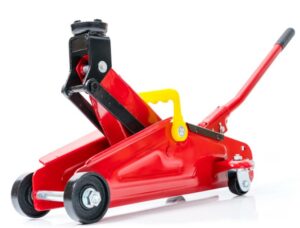
The reason why the saddle of floor jacks usually does not rise is due to the presence of trapped air in the hydraulic system. Therefore, the only way to fix this issue is to release that air. This is what we are going to learn today to bring your precious Craftsman floor jack back to its functioning position.
There is no need to spend hours on meaningless videos, or blogs as the entire process of bleeding a Craftsman floor jack has been shared below in simple terms, so even a novice can understand them without any difficulty.
How To Bleed A Craftsman Floor Jack?
This article will give you clear insight into how you can bleed your Craftsman floor jack from the comfort of your home.
Why Is Bleeding a Craftsman Floor Jack Important?
The term bleeding basically refers to releasing all the air that is trapped inside the hydraulic system of your Craftsman floor jack. If there is air inside the system, the floor jack will not function properly. In fact, the saddle may not even move from its resting position. This is why bleeding the machine is important, as it helps in removing all that air from the floor jack.
Process Of Bleeding A Craftsman Floor Jack
The entire procedure of bleeding your Craftsman floor jack has been shared in simplified words so you can follow the steps easily.
First Step
Take your Craftsman floor jack and place it on the table. Make sure you have a screwdriver close by, as you are going to need that. Craftsman floor jacks do not come with a cover plate on the oil filler plug area, but if you have an older model that does come with one, you need to get rid of that first. Remove all the screws from the cover plate and place them somewhere safe with the cover plate itself.
Second Step
Now hold the handle of your floor jack and turn the release valve counterclockwise to lock it in its place. Pump the handle rapidly a couple of times. Once you have pumped 8 to 9 times, hold the handle and give it a twist so that the release valve moves clockwise.
Third Step
Push the handle in a downward position, so that you can clearly see the oil filler plug. If there is a rubber plug, then you need to lift it slightly with your screwdriver. However, if there is a metal nut, then take your screwdriver and unscrew the nut on top of the filler plug. A critical step here is to only unscrew it slightly and not completely. If you unscrew it all the way, it will lead to a messy situation involving oil splattering everywhere.
Fourth Step
Once you have opened the oil filler plug slightly, start pumping the handle. You will see that some oil will start coming out of the plug, and in that fluid, you will a couple of air bubbles. This shows that the air that was previously in the hydraulic system of your Craftsman floor jack is getting released.
Fifth Step
However, pumping the handle alone will not release all the trapped air. The real bleeding will happen when you pump the saddle all the way up and then turn your release valve to lower the saddle. This step will release all of the air from the hydraulic system of your Craftsman machine. Repeat this step a couple of times till there is no air coming out of the oil filler plug. This means that your Craftsman floor jack has purged all of the trapped air. Tighten the screw on top of the filler plug and voila!
Conclusion
It sounds difficult but bleeding your Craftsman floor jack is not any different than bleeding other models of floor jacks. There are only a few minor differences in the procedure which have been shared in the article above. So, there is no need to call for the aid of customer services. Simply read the article above and get to work.
- Craftsman Jack Stands Review - October 18, 2022
- OTC 1545 Motorcycle Lift Review - October 18, 2022
- Pro Lift Jack Stand Review - October 17, 2022
